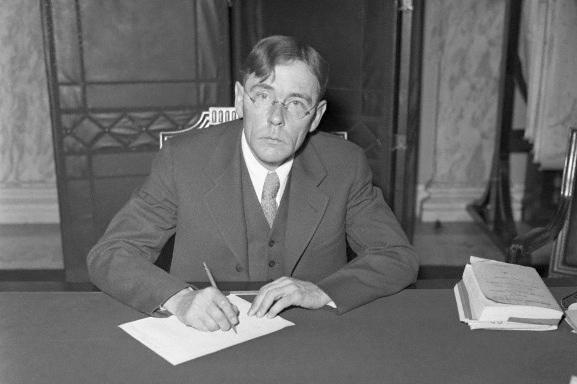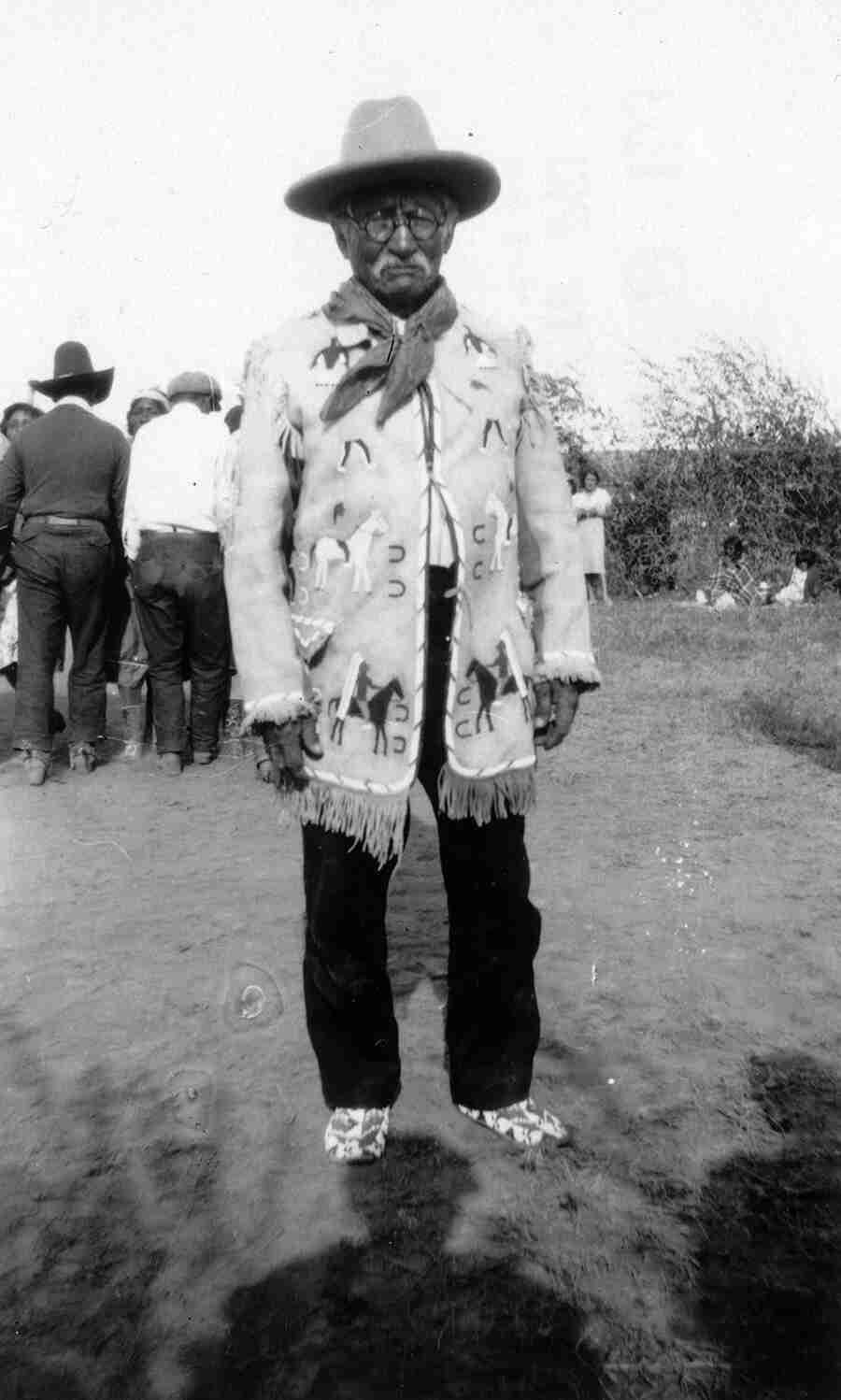Indian Reorganization Act (Indian New Deal)
Full Article
Passed by Congress in 1934, the Indian Reorganization Act (IRA) was a wide-reaching set of reforms designed to improve conditions for Indigenous people, especially those living on federal reservations. As the centerpiece of the “Indian New Deal,” the IRA focused on protecting tribal land, reestablishing tribal governments, and spurring economic development among Indigenous nations.
Spearheaded by John Collier, commissioner of the Bureau of Indian Affairs (BIA) under President Franklin D. Roosevelt, the IRA was designed to address the failures of previous federal Indian policy, which was based on the destruction of Indigenous sovereignty and culture. Despite this, many federally recognized tribes, including the Southern Ute and Ute Mountain Ute Tribes of Colorado, were skeptical of the act and accepted it reluctantly. While the IRA provided modest improvements in the lives of the Utes and other Indigenous people, it fell far short of its goal of achieving full tribal self-determination and economic independence.
Background
By the late nineteenth century, most Indigenous people lived on federally managed reservations. Despite their ongoing adaptations to American rule, the federal government generally viewed Indigenous people as backward people who were obstacles to national progress.
To solve this so-called Indian problem, the government enacted policies designed to force Indigenous people to assimilate into Euro-American society. A succession of laws ended treaty making with American Indian nations (1871), banned traditional customs and ceremonies (1883), privatized reservation land (1887), and abolished tribal governments (1898).
In addition, Indigenous children were forced into boarding schools where they were forbidden to speak their own languages, dress in traditional clothes, or practice any Indigenous religion. These children were often overworked, underfed, and malnourished, all of which contributed to outbreaks of disease at the schools. By the turn of the century, these policies had disastrous effects on the Indigenous population, leaving it fragmented, impoverished, and unhealthy.
A New Class of Reformers
After being generally ignored during the Progressive Era (1900–20), the plight of Indigenous people received greater attention in the 1920s. Anthropologists and writers began to move away from racist ideas about Indigenous inferiority and instead to recognize the value and beauty of Indigenous culture. Convinced that Native American culture should be restored and celebrated instead of punished and stamped out, a growing community of artists and intellectuals began to criticize the existing federal policy.
Among this new group of reformers was a young sociologist and writer from New York named John Collier. In the early 1920s, Collier allied himself with other reformers and artists in Taos, New Mexico, to vigorously defend the Pueblo people from a bill that would have taken vast amounts of their land. While engaged in the extended (and ultimately successful) fight to protect Pueblo land, Collier and fellow activist Robert Ely founded the American Indian Defense Association (AIDA) on May 7, 1923.
Unlike earlier white advocacy groups, such as the Indian Rights Association, the AIDA entirely rejected the doctrine of assimilation and instead called for sweeping reform that would restore Indigenous identity and self-determination. Over the next several years, Collier and the AIDA worked with and on behalf of Indigenous nations to improve conditions for Native Americans in New Mexico and California.
A New Deal for Indigenous Nations
In 1933, as the nation faced the unprecedented hardship of the Great Depression, President Franklin D. Roosevelt appointed John Collier as BIA commissioner. Collier was recommended by Interior Secretary Harold Ickes, a fellow Indigenous advocate. While Roosevelt and Congress launched a series of New Deal reforms to relieve poverty and unemployment during the Depression, Collier was determined to bring similar reforms to the nation’s Indigenous population.
Among Collier’s first acts as BIA commissioner was to decriminalize expressions of Indigenous culture and religion, which had been prohibited since the 1880s. He also hired more Indigenous people to the BIA and began closing boarding schools, cutting enrollment nearly in half by 1935.
The Wheeler-Howard Act
John Collier envisioned the linchpin of the Indian New Deal as the IRA, an ambitious reversal of federal Indigenous policy. His initial draft of the bill sought to completely remove the federal government from Indigenous affairs except for providing funds to establish tribal governments and corporations. Among other radical changes, Collier’s draft would have forced all Indigenous landowners to return their land to collective tribal ownership. It even called for the gradual dismantling of the BIA.
The Indian Reorganization Act (IRA) that eventually passed Congress as the Wheeler-Howard Act was a substantially revised version of Collier’s bill. While it reversed allotment, it did address some of the tribal criticism by giving Indigenous people who owned allotments the option to keep their land instead of forcing them to transfer it to a tribe. The IRA also included provisions to protect existing Indigenous lands and allow tribes to buy back land that had been deemed “surplus” and sold off under previous law.
The final draft of the IRA still allowed for the creation of tribal governments, but it kept Indigenous people squarely under federal authority. Not only were tribal constitutions subject to federal approval, but they had to be ratified by “a majority vote of the adult members of the tribe . . . at a special election authorized and called by the Secretary of the Interior.”
The IRA also included provisions to help Indigenous economies. It allowed tribes to incorporate as businesses, established sustainable forestry and grazing programs on reservations, called for a $10 million “revolving fund” that could provide startup loans for Indigenous businesses, and reserved $250,000 for “the payment of tuition and other expenses in recognized vocational and trade schools.”
Indigenous Opposition
After the IRA’s passage, each tribe had to hold a referendum to decide whether it wanted to accept the new law. Collier had assumed that most, if not all, tribes would welcome self-government under the IRA, but the referenda results reflected a dearth of tribal support. Nearly a third of the more than 250 tribes who voted on the IRA rejected the act. In addition, election turnout was poor; across all Indigenous nations, only 38,000 of the 97,000 eligible tribal members voted in the referenda. This meant that the IRA was applied to some tribes, including Colorado’s Ute Mountain Ute Tribe, without significant support from their members.
Reasons for rejecting the IRA varied among Indigenous nations. The Navajo, for instance, resented the IRA’s mandatory reduction of their sheep herd to conserve grazing lands. Other nations, including the Southern Ute Tribe of Colorado, were already used to the status quo and were uncomfortable with the IRA’s massive changes. In February 1934, Southern Ute tribal leaders wrote a letter to Collier in which they politely declined to vote on the IRA. The Ute Mountain Ute Tribe in Colorado also opposed the act; leader John Miller stated that he rejected any federal involvement in tribal affairs beyond fulfillment of the Treaty of 1868.
The IRA in Colorado
Convinced that Indigenous people would benefit from the IRA, Collier and his team tried to convince skeptical nations, including the Utes, to accept the act. Eventually, with the help of leader Buckskin Charley, the Southern Ute Tribe voted to accept the IRA on June 10, 1935, by a vote of 85–10. Almost half of eligible Southern Ute members chose not to vote.
When the Ute Mountain Utes finally held their referendum, only twelve Utes voted, and the IRA won 9–3. Despite the extraordinarily low turnout, the election satisfied the IRA requirement of having “a majority vote of the adult members,” and the IRA was applied to the Ute Mountain Ute Tribe.
Later, in the fall of 1936, the Southern Ute Tribe voted to adopt a constitution, though support remained far from unanimous. In May 1940, the Ute Mountain Utes approved their own Constitution by a vote of 91–12. The implementation of the IRA changed little in the day-to-day life of Colorado’s Ute people, though the Southern Ute Tribe did use its new autonomy to buy back some 220,000 acres of land that had been sold to non–Natives under earlier laws.
Flaws
Despite its various successes, the act’s highly touted material benefits largely failed to materialize, and when they did, they were unevenly distributed across Indigenous nations. In Colorado, for example, the Southern Utes and Ute Mountain Utes had fewer sheep and more cattle as a result of IRA grazing policies, but the law scarcely improved Ute incomes or education on either reservation. Rather, most of the tribes’ financial gains in the ensuing years came through their own actions—such as leasing rights to oil and gas deposits on tribal land—most of which occurred outside the specific parameters of the IRA.
There were several reasons why the act failed to realize reformers’ hopes. First, the IRA was a blanket solution that did not address the disparate needs of the hundreds of federally recognized tribes. Second, the IRA underestimated the degree to which many Indigenous people had already begun adapting to existing policy, including private land ownership, and the modern American economy. Many other tribal members were moving from reservations to cities in pursuit of better economic and educational opportunities.
Third, a variety of federal institutions, from Congress to the Bureau of the Budget, remained resistant to Indigenous autonomy and failed to adequately fund IRA provisions even after the act was passed.
Finally, whatever its actual merits, the IRA was destined to prove controversial among Indigenous nations because it was designed by a federal government that had spent generations deceiving, dispossessing, and murdering Indigenous people.
Legacy
The IRA unintentionally laid the groundwork for more repressive Indian policy in the coming years. Under presidents Truman and Eisenhower, Congress came to agree with John Collier’s initial suggestion of dismantling the BIA and other federal support systems for Indigenous nations. This resulted in a policy known as “termination,” officially adopted in 1953. Termination sought to completely sever the link between the federal government and tribes without the financial support that Collier called for in the IRA. Under termination, Indigenous nations were allowed to file suit against the government for any money they believed they were owed, but they would be on their own after that. Most of the nation’s federally recognized tribes resisted the termination policy, as they had been dealing with federal agencies for more than seventy years and had grown accustomed to the interactions.
In addition to its controversial application and legacy, the IRA fell well short of its goal to improve the lives of the majority of Indigenous people, even as it is widely recognized as a valiant effort at legitimate reform.
















